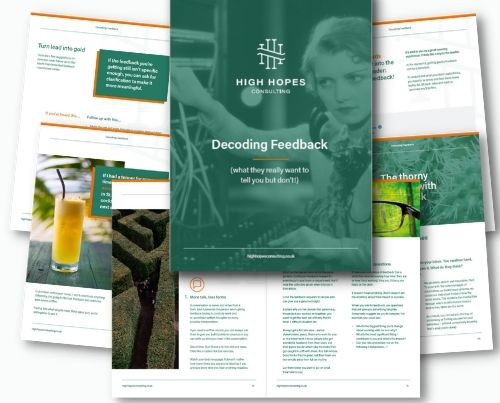What's your angle?
What's your angle?
Nicola Hopes

Unless you’ve been living on a desert island, you’ll have heard me bang on about the importance of involving users in change. (And if you have been living on a desert island, I’d like some photos of your view please!)
But even if you’ve bought in to the argument about engaging your users, you might be coming at it from the wrong angle.
I’ve had a few conversations with clients recently where it’s become clear that user involvement now needs to shift a gear to really make change stick.
Here’s a couple of approaches to highlight what I mean.
Approach one: we’re clear we need this change. Let’s speak to the users and find out how it benefits them, and we can persuade them to adopt it using their perspectives and language.
Approach two: we want to achieve this outcome. Let’s speak to the users and get their feedback on what needs to change to make it happen. Then we can design that into the solution, and they can help implement it.
Subtle, but a completely different feel.
Approach one is far more common but is much less effective and the change is much less likely to stick. And (I hate to break it to you) the users can smell from 50 paces that the game is about selling it to them.
But (I can hear you shouting at your screen) I understand the reason why the first approach is so common. It’s because project red tape and funding hurdles get in the way. Often Execs and Boards need to spell out what change they think they need to get it approved. Only then can they talk to the right people about it. And by then it’s too late to build the change with that in mind.
Turn it on its head
Not convinced yet? Or not sure how to fix it?
Have a look at your standard project or programme set-up steps and work out how long it usually takes before you talk to the people who are really affected by the change.
You might be shocked by what you discover.
But, depending on what you find, here’s a couple of tips to get slicker at the user angle and make change work for you and your users.
Bad to better
If you find you’re talking to users once you’ve designed the change and estimated it, that’s way too late and you’ll spend the rest of the project in fix-it mode. Depending on what you have an influence over, you have a couple of options.
Option 1: if you can, influence others to edit the process
Collect user feedback and stories on previous projects that highlight the issues of failed adoption, business disruption or naffing off talented people. This will make the case to design user needs into the solution from the start.
It is possible to engage users without significant delays to timelines or big increases in cost in these early stages by using techniques like ‘quick and dirty user research’ or ‘guerrilla testing’ using demos.
Option 2: if you can’t edit the formal process – it’s tricker but not impossible
Use your network to do some informal user research or user panel Q&A sessions in parallel with the formal process. You can then start to feed their thoughts into the change as early as possible. I’ve seen this done beautifully – you just have to commit your energy to making it happen.
Good to great
If you find you’re already talking to users at the design or definition stages, then you’re on the right track. But look at the type and depth of engagement to see if it can be richer and give you more focus and clearer priorities from day one.
Get the user angle right from the start, and I guarantee you’ll have faster delivery, better engagement and better adoption. And don’t forget to invite me to your project party to celebrate all the benefits – mine’s an Old Vine Zinfandel!
PS. And if you want to re-think your change framework to make it more user-friendly (see what I did there?!) – look no further than the Change Confidence Blueprint.
This is a tried and tested blueprint that helps you deliver change cheaper, faster and with fewer people. A set of tools and techniques to enable you and your team to embrace change with more confidence and, crucially, more success.
Benefit from my experience and the experience and insight of 23 organisations across 15 industries– including Tech, Education, Sport, Motor, Finance, Retail, Building, Property, Manufacturing, Power, Travel, Law, Logistics, Local Authorities and Charities.
It’s flexible depending on your needs so can be delivered as:
- Keynote speeches
- Masterclasses
- Programmes

